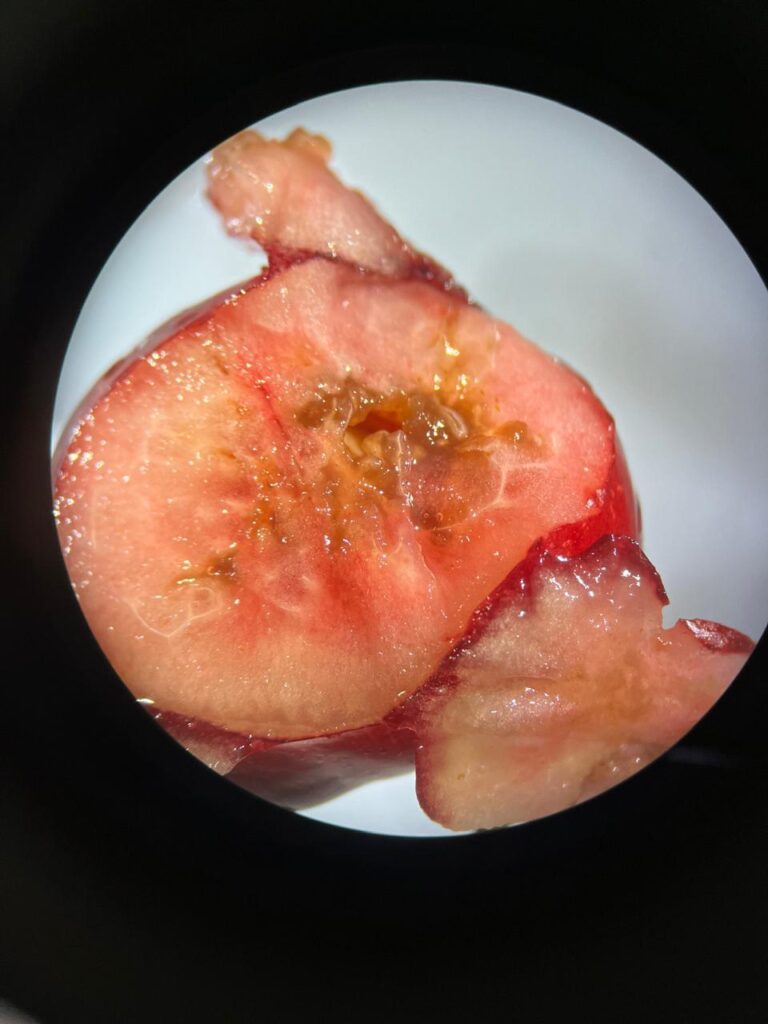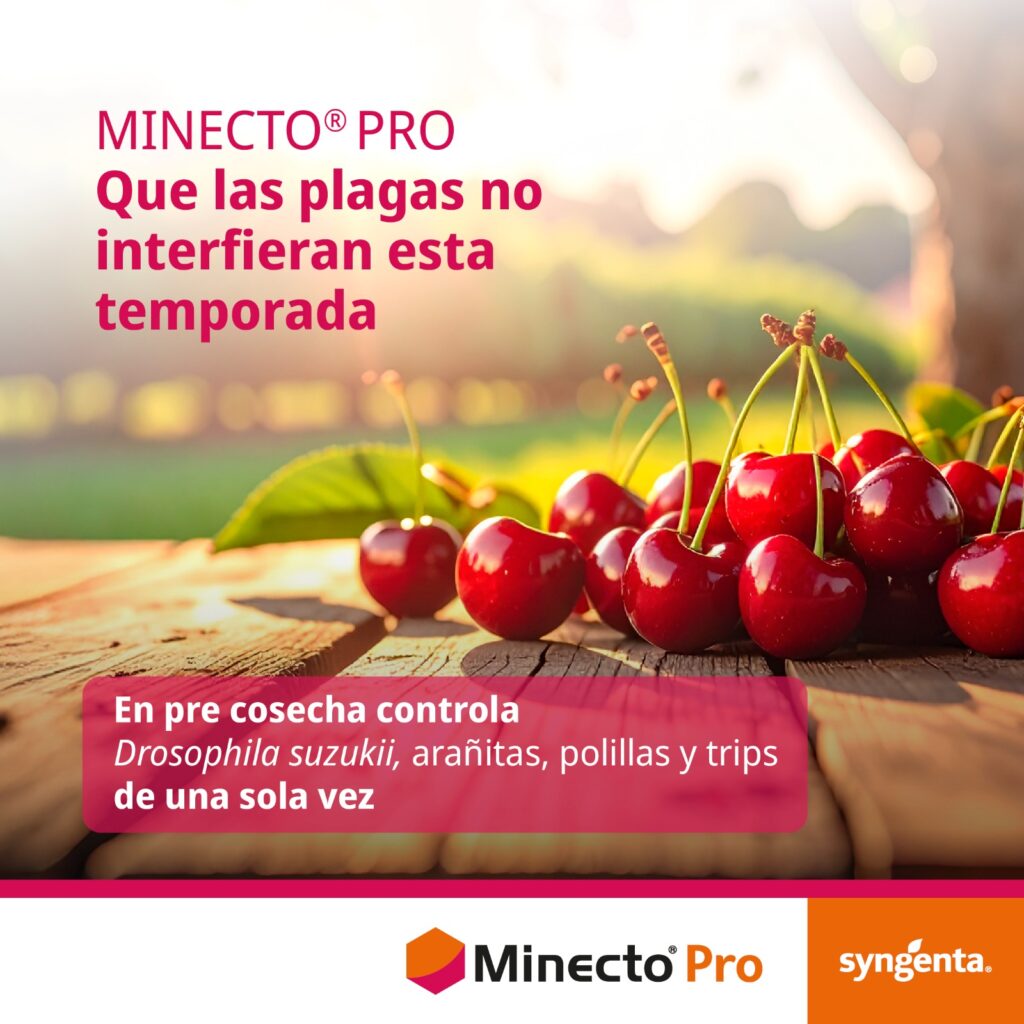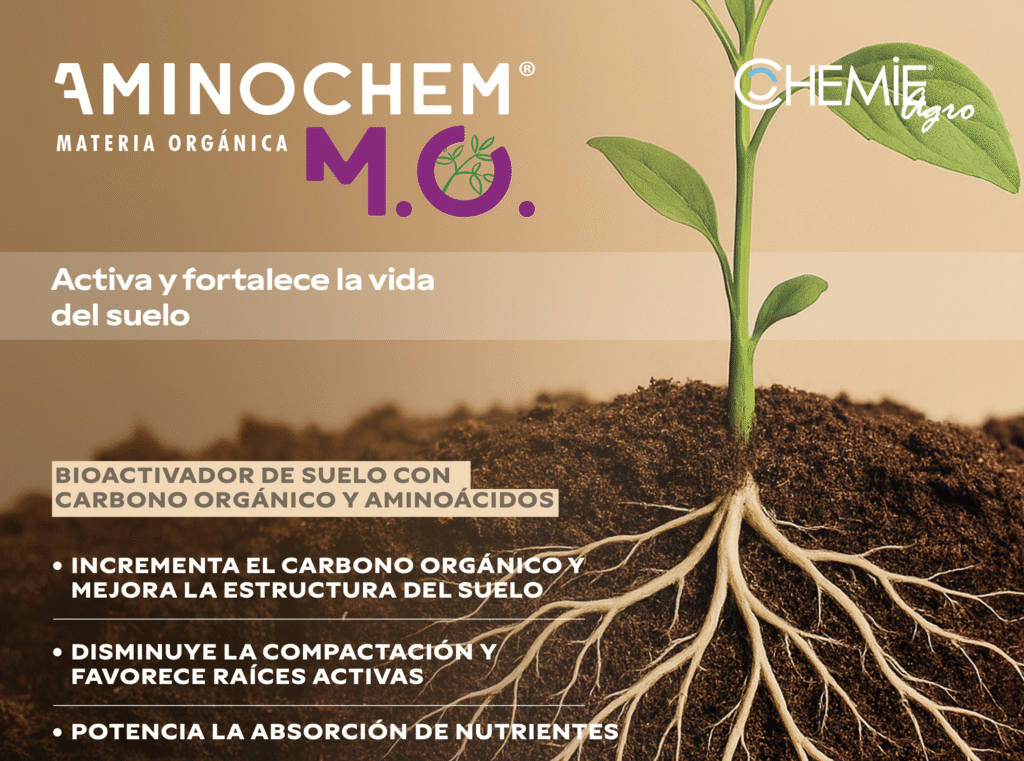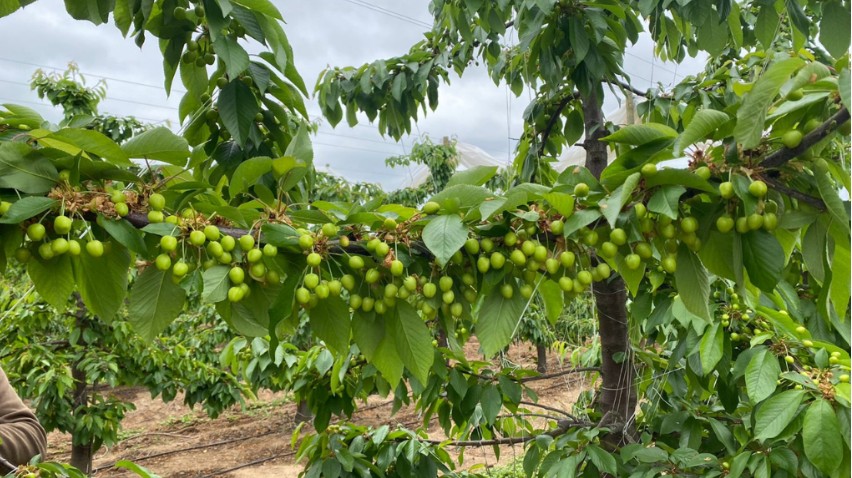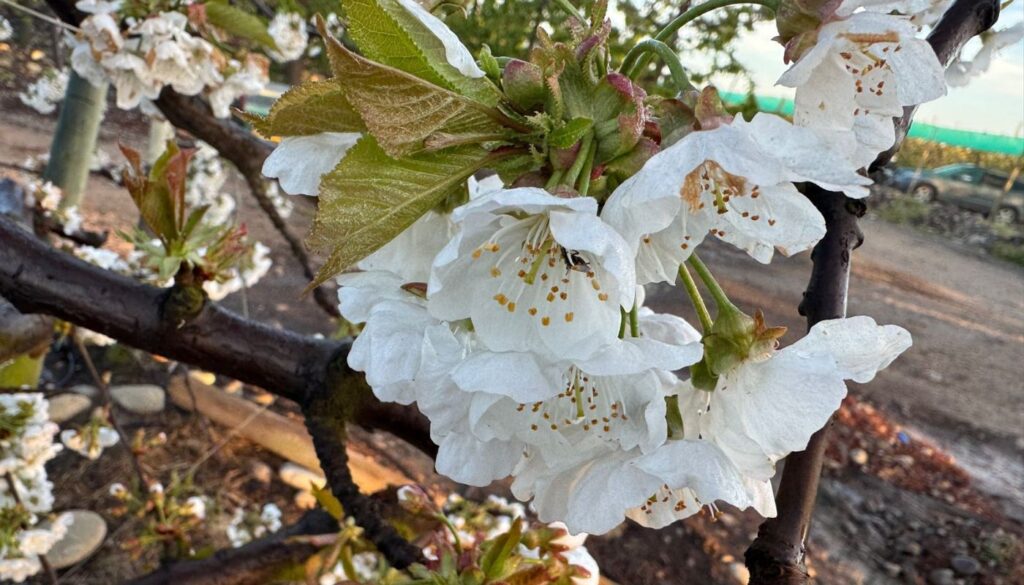The only foliar fertilizers complexed with sugar alcohols
Manni-plex® by BRANDT® is the only line of foliar fertilizers complexed with sugar alcohols, also called polyols, compounds that are the natural transporters of nutritional mineral elements, via phloem, of plants. Manni-plex® by BRANDT®, distributed in Chile by Sumitomo Chemical through Martínez y Valdivieso, has proven its effectiveness in different scientific studies, receiving the highest rating in studies by the University of California.
Foliar fertilization has been established as an effective technique to ensure optimal mineral nutrition of plants and it has been scientifically proven that fertilizers applied via foliar application, even when they are only salts dissolved in water, manage to penetrate the leaves of plants. In this way, key nutrients such as calcium, boron or zinc, often required in very small quantities, can be effectively incorporated into crops. However, this does not guarantee that these elements, which usually have very low mobility within plants, effectively reach the growth points that are sought to be reached. Among these, fruit stands out, in the case of woody crops.
What is BRANDT MANNI-PLEX? MANNI-PLEX ® TECHNOLOGY: BASED ON NATURAL NUTRIENT TRANSPORTERS
Manni-plex ® technology for foliar fertilizer formulation is unique and exclusive to BRANDT ® Consolidated Inc. (USA). This technology consists of complexing the elements
nutritional minerals, for example, iron (Fe), silicon (Si), calcium (Ca), boron (B), zinc (Zn), in stable form, with sugar alcohol molecules, also called polyols. Among others,
Mannitol, Sorbitol and Dulcitol. Sugar alcohols are natural compounds derived from photosynthesis that circulate unrestrictedly through the phloem of plants, so they can move from the leaves to the growing points, both above and below the roots. These molecules are the natural transporters of nutritional mineral elements via phloem, as demonstrated by Dr. Patrick H. Brown at the University of California, Davis, in 1996.
What advantages stand out in the MANNI-PLEX line?
-Provides nutrients for the plant that are immediately available for absorption.
-Low molecular weight and shape allow more nutrients to penetrate plant leaves and be translocated to growing points.
-Nutrients move freely and easily through the plant's phloem.
-The patented formulation coats the leaves and adheres to the leaf surface, making it available to the plant for longer.
-The formulation is compatible for mixing in ponds with most fungicides, insecticides and growth regulators.
-More efficient than other forms of nutrients.
How do you explain the positive response to the use of the MANNI-PLEX line by customers?
Regarding the formulation's penetration capacity, sugar alcohols are small molecules and 100% soluble in water, so they are able to penetrate without problems through the hydrophilic pathway of the leaf cuticle, as well as through stomata and cuticular cracks. For this reason, BRANDT ® Manni-plex ® technology products have an excellent foliar penetration capacity and are easily absorbed by the plant. Sugar alcohols also have surfactant and humectant properties, so BRANDT ® Manni-plex ® formulations do not require any type of adjuvant for application.
But the greatest advantage over other foliar fertilizers on the market is the ability of Manni-plex ® products to mobilize nutrients via phloem, since they are the only ones in which the mineral elements are complexed and stabilized with sugar alcohols, the natural transporters that carry nutrients from the leaves to the growth points.
Due to their high foliar absorption and phloem mobilization efficiency, Manni-plex ® products may present a lower concentration of the nutrient compared to less efficient products, particularly when it comes to microelements. This has been proven in rigorous experimental and field evaluations.
The correlation of polyol amounts and nutrient mobility within plants has been validated in scientific studies. The research showed that plants that were rich in polyols, such as mannitol, had better distribution of nutrients such as boron from leaves through the phloem and greater accumulation in fruit tissues.
BRANDT ® Manni-plex ® foliar fertilizers have a high formulation stability, so that when stored under appropriate conditions they have a shelf life of more than 3 years.
It is important to consider that foliar analysis, as the only reference, is not always the best tool to evaluate the effectiveness of a foliar fertilizer, since most of these products manage to increase the level of the nutrient in the leaf after being applied. It is advisable to evaluate the effectiveness of a foliar application by measuring productive or quality parameters, in a complementary way to foliar analysis. For example, the effectiveness of foliar calcium can be determined by measuring the firmness of the fruit pulp, both at harvest and post-harvest. The effectiveness of foliar application of Zn, on the other hand, can be determined by measuring the growth rate of shoots and roots.
What is the scientific support that explains the positive response to the use of the MANNI-PLEX line in clients?
It can be clearly explained in the information generated by Dr. Patrick H. Brown, in the Department of Pomology, University of California, DaŠis. 1995. Where they indicate that the mobility of boron in the phloem depends on different fruit species and show the mobility in the phloem in species rich in sorbitol.
Boron is generally considered to be immobile in phloem or to have only limited phloem mobility in higher plants. Evidence suggests, however, that Boron (B) may be mobile in some species within the genera Pyrus, Malus and Prunus.
What is the importance of polyol in the formulation of MANNI-PLEX line products?
The genera Pyrus, Malus and Prunus use sorbitol as a primary translocator and it has been clearly demonstrated that B forms stable complexes with sorbitol in vitro. The researchers further demonstrated that B is freely mobile in the phloem in Pyrus, Malus and Prunus species and that this is mediated by the formation and transport of B-sorbitol complexes.
The distribution pattern of B within shoot organs and the translocation of applied and isotopically enriched foliar B were studied in six tree species. The results demonstrate that in species where sorbitol is important (sorbitol-rich), B is freely mobile, whereas in species that produce little or no sorbitol (sorbitol-poor) B is largely immobile.
Sorbitol-rich species used were almond, apple and nectarines, sorbitol-poor species included fig, pistachio and walnut. In sorbitol-rich species, applied foliar B was transported from treated leaves to adjacent fruit and specifically to fruit tissues that developed during the experimental period.
What happens when there are fruit species with low endogenous polyol content?
Sorbitol-poor species had significantly higher B concentrations in older leaves than in young leaves, while fruit tissue had the lowest B concentration. This occurred regardless of the source and form of B applied to the plant.
What happens when measuring the effectiveness of Zinc using the MANNI-PLEX line?
In 2008, Dr. Patrick Brown of the University of California at Davis and his team evaluated the efficacy of more than 20 foliar zinc fertilizer products on the North American market, using the model plant Arabidopsis thaliana, under controlled conditions in growth chambers.
The evaluation was based on Zn, because it is the most commonly applied nutrient via foliar application in the United States and because of reports of large differences in efficacy between the different commercial formulations of foliar Zn. To measure the efficacy of each product, its phloem translocation capacity, among other parameters, was evaluated and they were rated on a scale of 1 to 10. Manni-plex ® Zn was the best evaluated product in the trial, obtaining a final score of 9. The trial was repeated 3 times and on all 3 occasions Manni-plex ® Zn obtained the same score, being the best evaluated in each repetition.
The results show that products with higher Zn contents or concentrations are not necessarily the most effective, but rather, on the contrary, the best performing products generally have lower Zn concentrations.
How does MANNI-PLEX technology impact foliar fertilization of fruit species?
It has a positive impact on the results, since its technology is based on the complex nutritional element such as Zinc and Boron with natural transporters, recognized by the plant and that allow greater efficiency in the use of foliar fertilization to the points of
growth.



